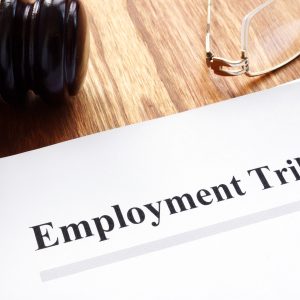Key Contact: Claire Knowles
Author: Conrad Hazlitt
Workplace managers have day-to-day interactions with colleagues that you, the employer, may later need to rely on. Ensuring that the managers in your organisation are properly documenting their interactions will put your business in a far stronger position to later take difficult decisions, such as disciplinary action or bonuses assessments. Without a properly documented paper trail, making a case for certain actions is potentially risky as your organisation may then find itself in a precarious “he said, she said” situation if the employee later challenges the decision. At Acuity Law, we frequently represent employers defending Tribunal claims brought by employees, and, speaking from experience, documentation can be the difference between whether a claim succeeds or fails.
Whilst workplace documentation may seem like extra, unnecessary effort in the moment, effective documentation should be seen by employers as an essential part of risk management. We recommend taking steps now to ensure that your managers are appropriately documenting their relevant workplace interactions.
What is ‘documentation’ and what should managers be documenting?
By ‘documentation’, we mean written records that support someone’s account of workplace events. Documentation should not be limited to minutes taken from formal HR meetings (such as disciplinary or performance review meetings) but should also cover relevant everyday interactions. As a ‘rule of thumb’, we recommend that managers focus on documenting interactions and/or events that they anticipate potentially having to refer back to in the future. For example, if a manager notices one of their team starting to dress inappropriately for work, they should note down examples of this and document any discussions that they have with the employee about it.
Other examples of the kinds of HR things managers should be documenting include:
- Any inappropriate workplace behaviour.
- Where a colleague is starting to develop a poor attendance record.
- Performance related feedback, particularly where the employee is still on their probationary period.
- Informal as well as formal employee grievances or complaints.
- Discussions around performance targets.
- Managerial instructions pertaining to any change in process.
- Training.
- Meetings or discussions held to discuss any of the above.
How to document effectively
Form: There’s no ‘set form’ that managers’ day-to-day documentation needs to take. Keeping a handwritten diary or daybook, emailing yourself with meeting notes or keeping some other digital records are all good methods to document workplace events. Managers can of course use a combination of multiple different methods if this suits them.
Detail: Good documentation doesn’t have to amount to transcriptions of everything that’s said, often bullet points of key interactions will be sufficient. Ultimately, the level of detail needed will be dictated by the context of an interaction. For example, observations about an employee’s attendance record might be captured in bullet points whilst a meeting to discuss the issue might include a more detailed account. If someone is in doubt as to the level of information that should be included, the more risk averse approach would be to include more information.
Timing: Ideally documentation should be completed as close as possible to when the relevant incident occurs so that records are accurate and reliable. It should be possible to look at someone’s documentation and identify when an event took place and when the written note of it was made.
Content: Documentation should be factual, not judgmental. It should describe events as they occur, not based on someone’s opinions or thoughts about the event. For example, don’t say “James was late again today for no good reason”, draft the documented note in a more neutral way such as “20 January 2022 – James arrived at work at 11am today two hours later than his scheduled start time. He told me that he had overslept.”
Documenting Health & Safety
In addition to documenting HR issues, there are various legislative obligations covering an employer’s duty to document and record Health & Safety related matters. The extent and nature of these reporting obligations may vary from industry to industry and the details here are beyond the scope of this article. Employers should ensure though that they are properly documenting H&S matters as required.
The Acuity employment law regularly team provide organisations with HR training covering a variety of topics. If you would like Acuity to provide your managerial staff with training on the importance of effective documentation and how to do it correctly, or any other HR related topic, please feel free to get in touch with us.





